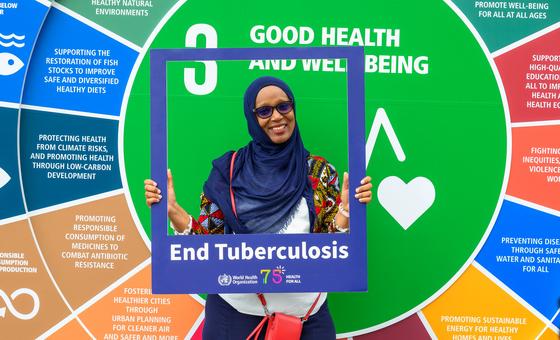The finding comes in the latest WHO Global Tuberculosis Report which reveals that 7.5 million people were diagnosed with TB in 2022 – the highest figure ever since the UN agency began global monitoring in 1995.
TB is an infectious disease that mainly affects the lungs. It is caused by a type of bacteria and spreads through the air when infected people cough, sneeze or spit. TB is both preventable and curable.
Access to health services
The rise in TB diagnosis was attributed to good recovery in access to, and provision of, health services in many countries, said the report, which features data from 192 nations.
India, Indonesia and the Philippines – which together accounted for over 60 per cent of the global reduction in new diagnoses in 2020 and 2021- all recovered to beyond 2019 levels last year.
Tedros Adhanom Ghebreyesus, the WHO Director-General, recalled that TB had plagued previous generations for millennia. People suffered and died from the disease without knowing what it was, the cause, or how to stop it.
Writing ‘the final chapter’
“Today, we have knowledge and tools they could only have dreamed of,” he said. “We have political commitment, and we have an opportunity that no generation in the history of humanity has had: the opportunity to write the final chapter in the story of TB.”
Globally, an estimated 10.6 million people fell ill with TB in 2022, up from 10.3 million the previous year.
The majority were in the WHO Regions of Southeast Asia, Africa, and the Western Pacific, which together accounted for nearly 90 per cent. Smaller proportions were reported in the Eastern Mediterranean, the Americas, and Europe.
The total number of TB-related deaths, including those among people with HIV, stood at 1.3 million in 2022, down from 1.4 million the year before.
However, COVID-19 disruptions resulted in nearly half a million more deaths from TB during the period from 2020-2022, and the disease continues to be the leading killer among people with HIV.
Meanwhile, multidrug-resistant TB (MDR-TB) remains a public health crisis. Last year, an estimated 410,000 people developed it or another type that is resistant to the antibiotic rifampicin (MDR/RR-TB), but only two in five accessed treatment.
Although there is some progress in the development of new TB diagnostics, drugs and vaccines “this is constrained by the overall level of investment in these areas,” said WHO.
Missing the mark
Global efforts to combat TB have saved over 75 million lives since the year 2000, but action must be stepped up, the agency said, as it remained the world’s second leading infectious killer in 2022, behind COVID-19.
Despite the significant recovery in 2022, progress was insufficient to meet global targets set in 2018, with pandemic-related disruptions and ongoing conflicts being major contributing factors.
For example, the net decrease in TB-related deaths from 2015 to 2022 was 19 per cent, or far short of the goal of a 75 per cent reduction by 2025.
From commitment to action
At a meeting held during the High-Level Week of the UN General Assembly in September, the international community reinforced the 2018 commitments and targets, and set new ones for the period through 2027.
The new targets include reaching 90 per cent of people in need with TB prevention and care services, using a WHO-recommended rapid test as the first method of diagnosis, providing all patients with a health and social benefits package, ensuring the availability of at least one new safe and effective TB vaccine, and closing funding gaps.
The report emphasized that ending the global TB epidemic requires translating these commitments into real action.

